iPhone 15 review - yes, it’s worth upgrading

If you’ve had your old iPhone for a couple of years and have been holding out for a handset to justify an upgrade, I'm here with some good news: Now’s the time.
The iPhone 15 isn’t a simple collection of small changes like the iPhone 14 was in 2022. There’s a lot here to make it worth the splurge. Coming from an iPhone XR or 11? The 15 will feel like an absolute revelation.
This new model is a proper step forward that takes several features that used to be exclusive to Pro models and puts them in the standard lineup. High-resolution camera? Tick. With a useful optical zoom? Tick. Clever “Dynamic Island”? Tick. Brighter display? Tick.
But the biggest highlight here is the addition of a USB-C port for charging and data transfers. That’s right. Say goodbye to Lightning. Your iPhone now charges using the exact same cable as your headphones, wireless speaker, tablet, laptop, mouse, keyboard and more. At last, Apple is bringing the iPhone in line with the rest of its devices — and that’s a big part of why I’d recommend upgraders pick this more future-proof model over older iPhones.
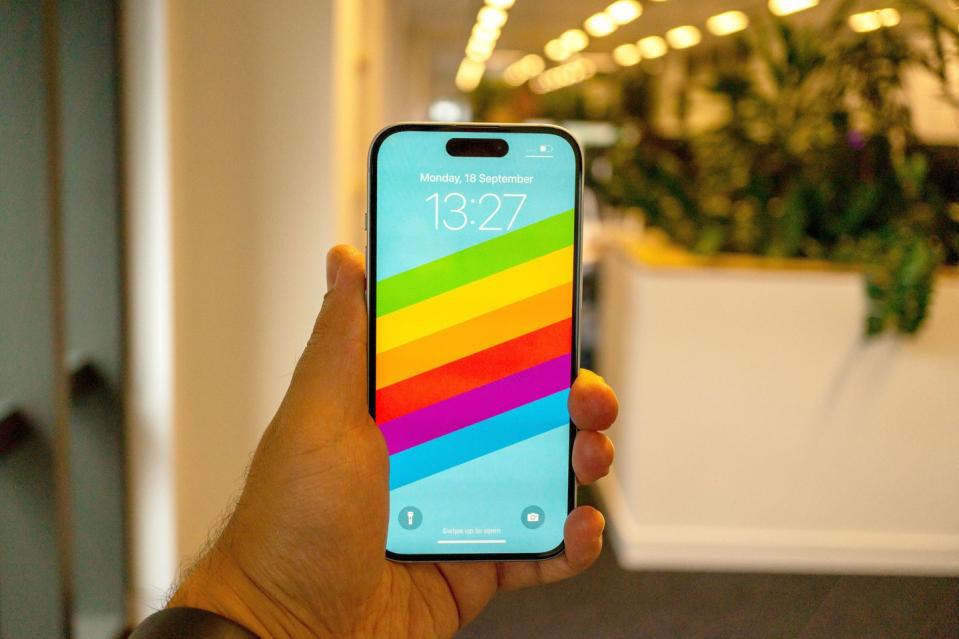
iPhone 15 key specs
Screen size: 6.1-inch
Resolution: 2556 x 1179 pixels
Operating system: iOS 17
Processor: A16 Bionic
Cameras: 48MP main, 12MP ultra-wide, 12MP 2x telephoto, 12MP front-facing
Battery life: Up to 20 hours
Storage: 128GB, 256GB, 512GB
Weight: 171g
Water resistance: Yes, IP68
Micro SD card slot: No
iPhone 15 design
When it comes to design, much like the 15 Pro and Pro Max, the iPhone 15 is still very obviously an iPhone. From a distance, you’re probably not going to be able to tell it apart from others like the iPhone 14, 13 or 12, but it’s immediately obvious which is which when you’ve got them in your hands.
This is hard to describe but so clear when you pick up a caseless 15 — it’s simply much, much nicer to hold. Apple has subtly “contoured” the edges of the handset, and the back glass has a grippier matte texture.
Compared to many other phones we’ve tested at Digital Spy — especially everything in the Google Pixel lineup — this is a major selling point. I'm not joking: I’ve witnessed the Pixel 7 slip itself off a desk to clatter to the floor. You could, of course, add a case to your iPhone 15 if you prefer, but it no longer feels like a must-have for grip, as long as you feel confident that you’re not prone to dropping your new phone.
I’ve noticed that commentators on Twitter (or X, if you like) are going on about how the pastel colour lineup for the 15s looks like various shades of “off-white”, but I’d take that with scepticism. Many of these online observers haven’t even touched the iPhone 15. I have, and I’d say each colour is clearly differentiated, although soft and subtle. (Look, you won’t mix up the light blue with the green unless you’re overdue an eye test.) In use, I love all of these shades — the 15 comes in pink, yellow, green, blue and black — and I expect the Barbie pink and calming yellow to be big hits with shoppers.
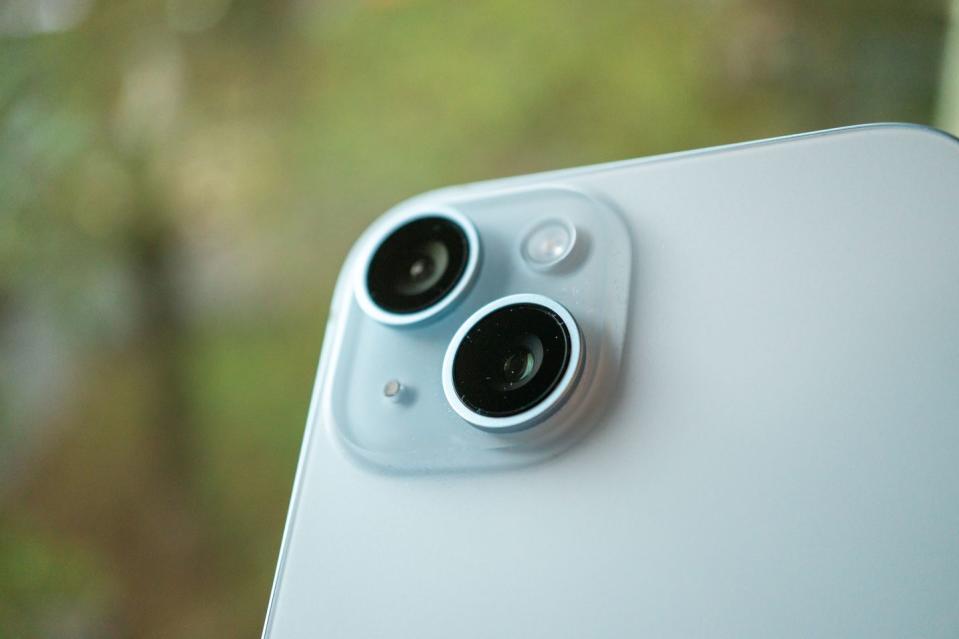
iPhone 15 camera
Say hello to pixel-binning. With the iPhone 15 and 15 Plus, Apple has welcomed its 48-megapixel (MP) sensor to its standard smartphone lineup. That means enhanced light-gathering capabilities and 24MP output from the terrific main sensor.
In addition, it now has a proper 2x zoom that uses the central portion of that sensor for 12MP photos — a first for the main iPhone range. It still has the same 12MP ultra-wide and 12MP front-facing lenses, although these benefit from the boosted night mode and upgraded HDR.
Yes, the iPhone 15 lacks the longer telephoto lens of the Pros, but I tend to find that’s our least-used lens on the Pro models anyway, as the 2x works perfectly for portraits and most everyday close-ups. And, after snapping away with these cameras, I'm left feeling like they’re right up there with the Pros for performance.
You also get the option of a 48MP “Max” mode for super high-res HEIF or JPEG files. This delivers considerable extra detail to zoom in on and will be ideal for that essential landscape snap while on holiday.
The file sizes also aren’t ridiculous, coming in at about 5MB for a “HEIF Max” and 10MB for ”JPEG Max”. If you’re wondering what HEIF means, it’s a “High-Efficiency Image File Format” that’s better for optimised and smaller files but not as widely used as JPEGs yet.
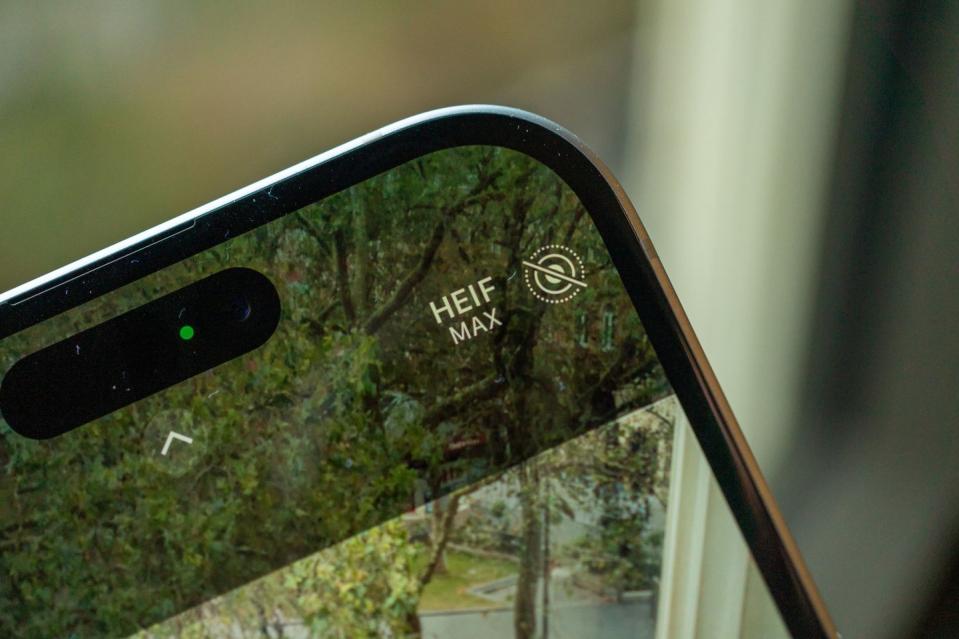
The other big upgrade that I love is the change that Apple has made with its “next-gen” portrait capture. This effectively makes portrait mode automatic in photos where the phone detects people or pets (at the moment, this means just cats or dogs).
You can take a shot without turning on portrait mode, and then turn it into a portrait with a soft background blur afterwards. As a bonus, you can also manipulate the image’s focus point, and we can see photographers getting really creative with this.
In my hands-on tests, I’d say this now takes the crown as the best mobile phone camera in its price bracket, with a subtler touch to its processing than the aggressive approach we see on Samsung and a bit less forced saturation than you get on the Pixel series.
The output is slightly more neutral, but it feels like Apple puts creative control in your hands. It looks great without tweaks but is ready for editing if needed, and there are always the “Photographic Styles” that you can implement to get every shot looking how you like. I'm particularly impressed by the new portrait control, the night mode and the output of the 48MP Max files.
Below, I’ve included a gallery of photo samples from the iPhone 15 camera system. These are all straight from the camera, with no re-touching or editing.
iPhone 15 display
There’s a lot that I like about the iPhone 15 display, but I’ll be honest that it’s not going to thrill specs obsessives compared to much of what’s available in the smartphone market. It’s getting harder and harder to understand why Apple withholds features like an increased refresh rate and always-on display from its main iPhone lineup other than to differentiate it from the Pro models. (The two features go hand-in-hand — and if everything from ancient Samsung phones to the latest cheap Pixel 7a can manage this, I'm sure the iPhone can.)
Most people probably won’t notice the benefit of a higher refresh rate, but an always-on display is such a handy addition on every phone I’ve tried with the feature, enabling me to glance at info without waking the phone. The system upgrade iOS 17 delivers a clever “StandBy” mode to turn your phone into a glanceable smart clock while charging and horizontal, but I'm sorry to say it’s just not that useful on the iPhone 15 because the screen turns off after a few moments.
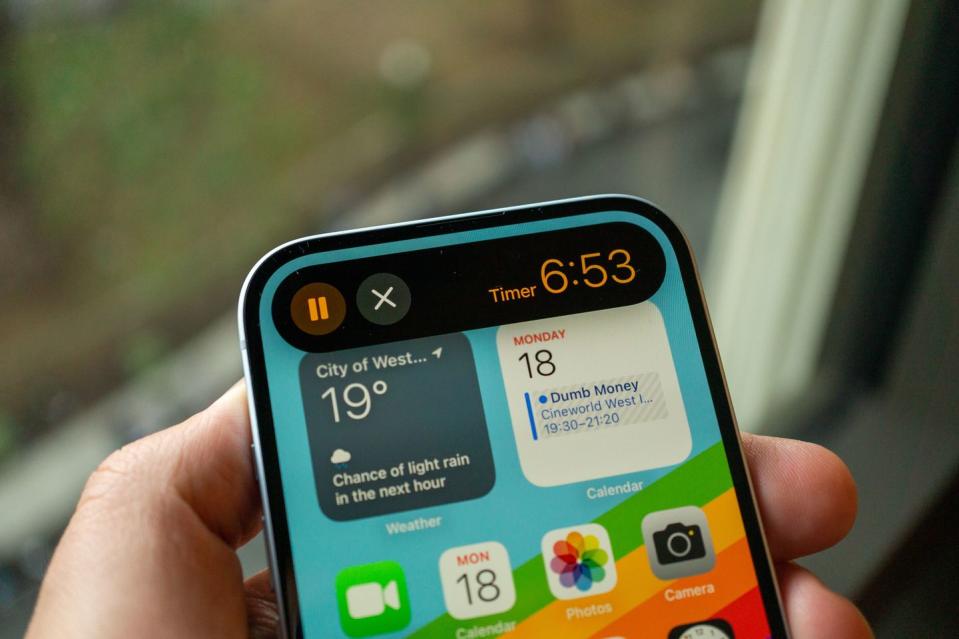
However, I applaud Apple for bringing the previously Pro-exclusive “Dynamic Island” feature to the top of the screen on the iPhone 15. This replaces the “notch” with a pill-shaped display area around the front-facing camera and sensors. It’s designed to show “live activities” like sports scores, flight info, a timer countdown and the progress of your Uber Eats order, along with the currently playing song or podcast in any app. It works perfectly, and, despite the questionable name, is already a feature we love from the iPhone 14 Pro models.
I'm sure you’re wondering why this can’t be as small as the pinhole camera design we now see on many Androids, and the answer is that those phones have nothing close to how reliable Apple’s Face ID is. They may have a “face unlock”, but those systems are far less useful and can’t confirm payments or authenticate entry into your banking app. No Android manufacturer can do 3D face recognition, whereas Apple offers it in every phone in its lineup, save for the budget iPhone SE.
iPhone 15 performance and battery life
The Pro-powering processor from last year’s iPhone 14 Pro and 14 Pro Max is now inside the iPhone 15, and this chip is a seriously speedy addition. In general, Apple’s A-series smarts are way ahead of the competition, so I wasn't too disappointed that last year’s iPhone 14 only had the A15 Bionic. It made the phone feel iterative, but in use, it wasn’t a big deal.
However, it’s still great to see the A16 Bionic here and know that it delivers quick and efficient performance no matter the tasks you throw at it. You’re unlikely to notice a big difference in day-to-day use, but the phone can deliver more device-based machine learning in addition to loads of extra camera capabilities. In short, it’s smarter and faster.
On battery life, Apple isn’t claiming you’ll see any real difference here. It continues to claim “all-day battery life” with up to 20 hours of video playback for the iPhone 15 on the spec sheet, and I’ve got no reason to doubt it. After a few weeks with the handset, it’s getting me right through to the end of the day with just enough battery, but it’s definitely a phone you’ll have on charge overnight.
There are ways to extend the battery life, though, and one of the best tips I can share is just to use the “low power mode” often, as a way to keep the battery from draining quickly. Turn down the brightness, and turn on low power mode to dial down features like 5G, visual effects, background app refresh, photo syncing and email fetching. You’ll be surprised how much this helps with battery life.

iPhone 15 connectivity and charging
One thing I really appreciate is that it’s fast to recharge and works via MagSafe (speeds up to 15W) and Qi wireless charging (up to 7.5W), with the iPhone 15 now also offering a USB-C port for charging and data transfers. In terms of speed, this delivers about half your battery back in 30 minutes. So far, the same as Lightning. But where it excels is for sheer versatility in terms of connecting to loads of accessories and existing chargers.
I'm not going to lie: It’s for this reason that the addition of USB-C is probably our favourite thing about the new iPhone lineup.
Shortly after unboxing, I was plugging in all manner of USB-C gear. Everything works without limitations. A USB-C to 3.5mm DAC to power wired headphones and deliver high-res audio? A third-party USB-C to SD card reader to offload our photos from my “big camera”? Quality non-Apple cables for charging? USB-C power banks? I repeat: It all works.
You can use this port for data transfers, connecting to the Backbone One mobile gaming controller, or hooking up USB-C EarPods, if that’s your speed. You’ll also be able to recharge an AirPods Pro case or an Apple Watch from your phone battery when using the right cable. This change feels like a big deal to a certain kind of iPhone user, and it’s a group that we’re part of.
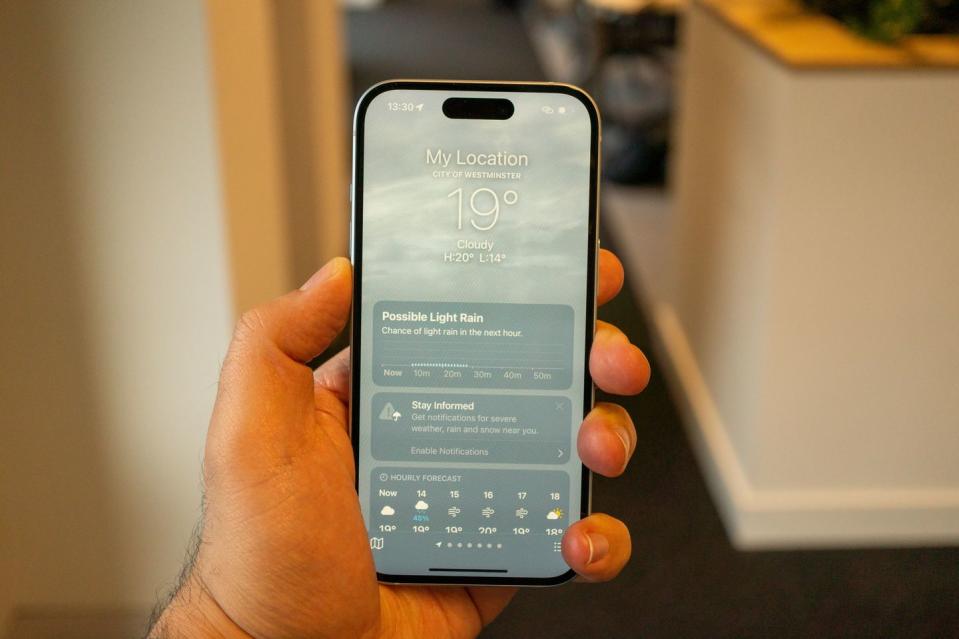
iPhone 15 drawbacks
The main downsides to the iPhone 15 are aspects of the handset that I’ve already mentioned earlier in this review. It’s a shame it lacks an always-on display or variable refresh rate when cheaper Android rivals have had these features for years.
While the absence of these abilities isn’t always noticeable, I think they’re the kind of thing that most iPhone users would love if they had them — especially for the new “StandBy” mode and because they’ve existed in the Pro lineup for over a year now.
I’d always love a bit more battery life on a new iPhone, so while there’s no real issue with “all-day” battery life, I think some buyers will compare this to certain Android competitors and feel like those have more battery life. I’d say this also isn’t a significant drawback, but it’s unfortunate that the iPhone 15 battery isn’t really an improvement over its predecessor.
Beyond these points, there are a handful of Pro features that I think could’ve come to the “normal” iPhone 15. I'm mainly talking about the “action button”, one of our favourite features on the Pro phones that probably should be on the standard models. I'm sure it will be from the next iteration.
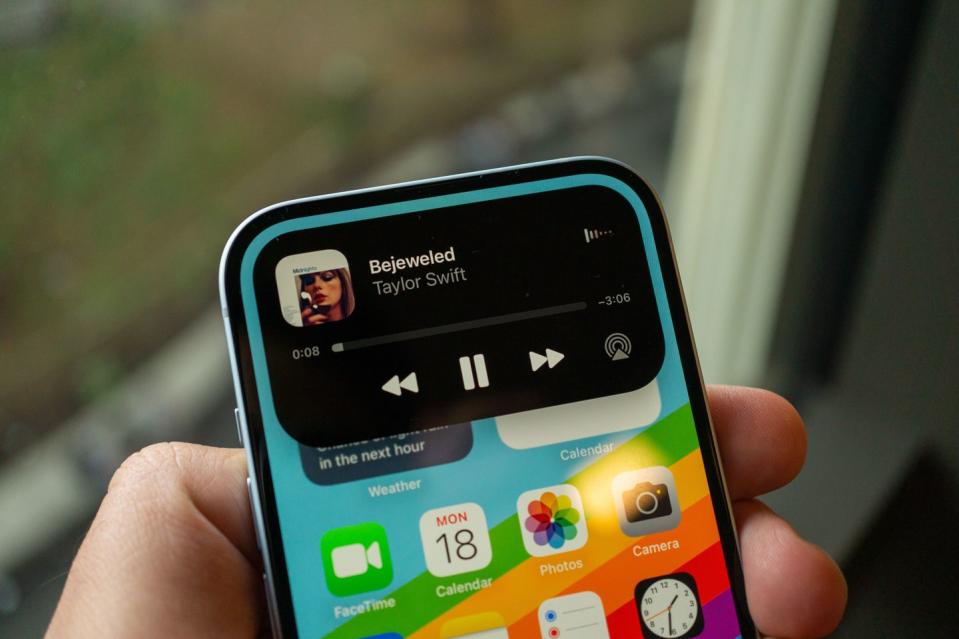
iPhone 15 verdict
Overall, I’d say that this iPhone is much more than an incremental change — and thanks to USB-C and a noticeable camera overhaul (with the first telephoto in a standard iPhone), I reckon it’s the iPhone upgrade you’ve been waiting for.
If you already have an iPhone 14 or the virtually identical iPhone 13, I’d wager your phone and its battery are still in pretty good condition. In that case, you shouldn’t rush out to spend your money on the latest model, as iOS 17 will help your handset feel new — for the time being, anyway.
For those of you still carrying an iPhone XR, 11 or 12, I’d say that now’s the time to consider the upgrade. The absolute best news about the iPhone 15 is that it not only comes with an extensive list of welcome changes but is actually more affordable than the iPhone 14 was when it came out in 2022. So, you’ll spend £50 less than you would have last year while getting a handset that feels like a major step forward.
You Might Also Like


